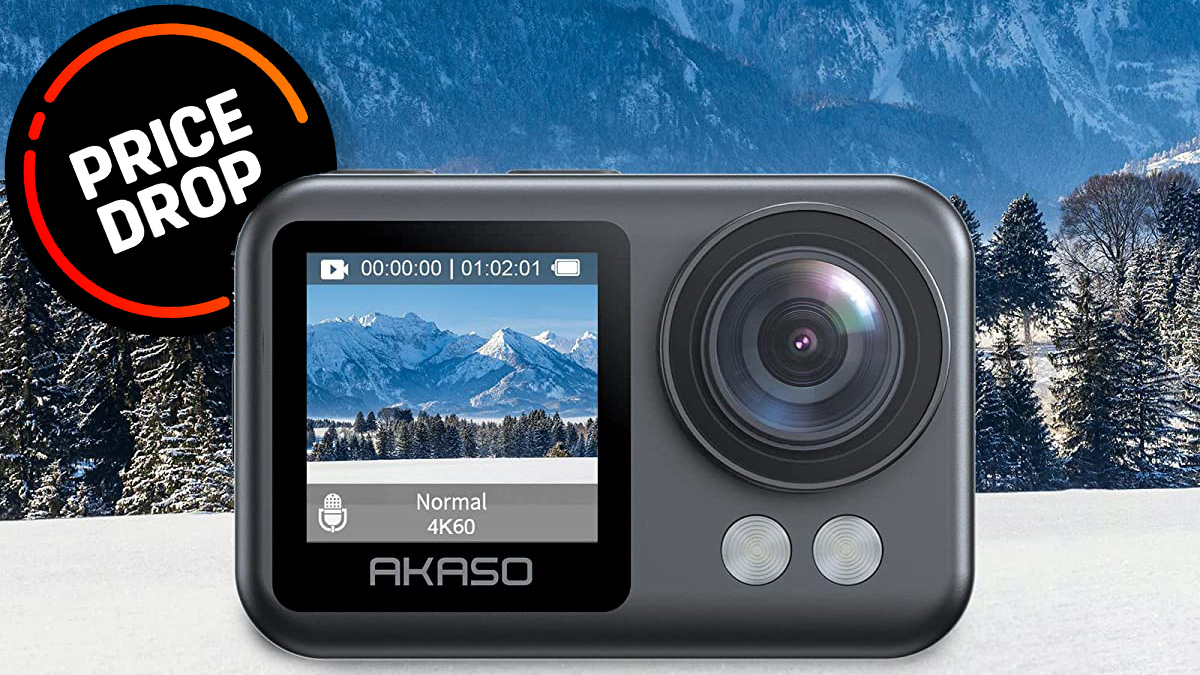I don't spend loads on my food photography props – but a professional camera helps!
Shooting in dim restaurant lighting? Use a white napkin as a reflector! French food and travel photographer and blogger Emilie Franzo shares her advice and techniques for content creators
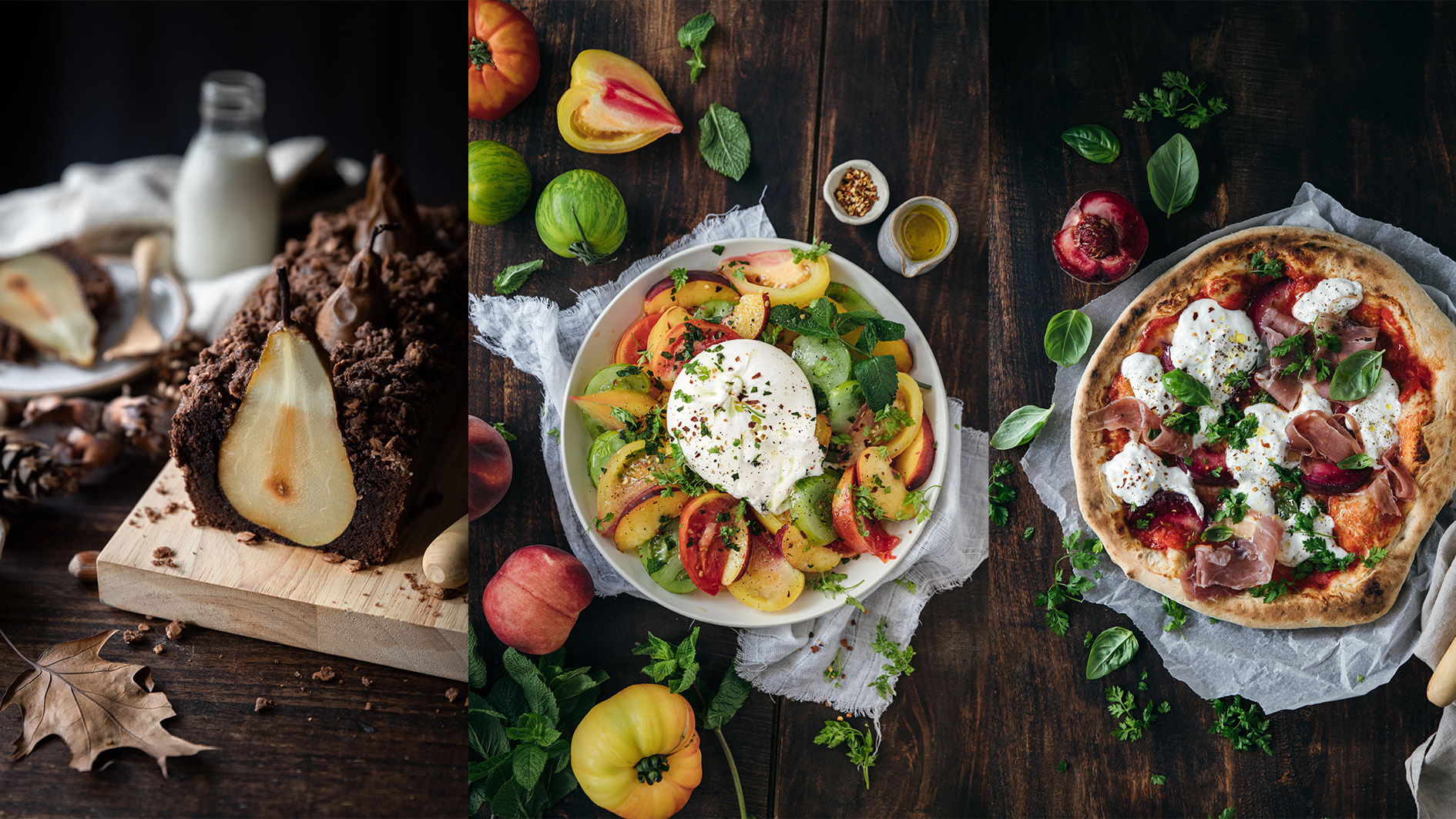
As food photography has continued to blossom in popularity in recent years, and with so many of us stuck in our homes over the past two years, a new era of talented creators have taken the scene by storm.
But out of all of these incredible innovators, Emilie Franzo stands out from the crowd with her unique take on classic, rustic French cuisine – known specifically for her mouthwatering rustic pie creations among other tasty treats she concocts.
Having written a collection of well-received cookbooks in recent years, as well as amassing an Instagram following of 168k, Emilie has been sharing her professional photography journey, what kind of food makes her tick, and her creative process for taking such wonderful images.
Q. How did you become a food content creator? What drew you to food?
It was pure coincidence really! I never expected to make it my full-time job. I’ve always had a passion for cooking as it’s always been a big thing in my family, making lunches and big dinners together for everyone. When Instagram started to become popular, I thought it would be a nice way to share my passion for food with the world, so I just started posting pictures of the food I was making for my family and friends.
Over time, people started taking notice and asking for my recipes, but these were too lengthy for Instagram – this is what kickstarted the idea for my blog. From there, I knew I needed to put more effort into my photography – I was creating something bigger and I needed my images to reflect that. I bought my first professional camera and started focusing on growing my platform and upping my photography skills.
These are the best cameras for food photography.
Get the Digital Camera World Newsletter
The best camera deals, reviews, product advice, and unmissable photography news, direct to your inbox!
The decision to go full-time as a content creator came after quite a discouraging experience when I was working full time in communications, I thought, “I’m 25 and I’m going in to work unhappy everyday – this can’t be my life”. With both my Instagram page and blog doing really well, and more companies approaching me to work with them, I knew it was the right time to start something of my own.
A post shared by Emilie Franzo (@plus_une_miette)
A photo posted by on
Q. What are the most popular photos on your feed you have captured? Why do you think they’ve garnered so much attention compared to your other creations?
Right now, my best performing posts are my signature rustic pies, which is something I’m known for in France. I think this is because people are really into pastry content at the moment, and it’s also appealing to the eye. The look of the crust, the mouthwatering filling – it really invites you to dig in.
They’re also great for telling a story. Sometimes I take the pictures while I’m making the pie, and I include the ingredients all around the scene, like eggs and sugar. This makes people feel like they’re in the kitchen with me, and that helps create a warm energy around the picture. And then at the end, with the pie finished and some nice plates framed around it, I can create that personal connection that makes people think they’re at the table with me and they can take a slice of it.
However, the most liked picture on my Instagram so far this year is a picture of crepes I made for Candlemas. In France, it is tradition to make crepes on this day and we all love to get involved. This picture worked because it's a dish that a lot of people like, but also because of how the image is framed with different kinds of ingredients, such as lemons and honey.
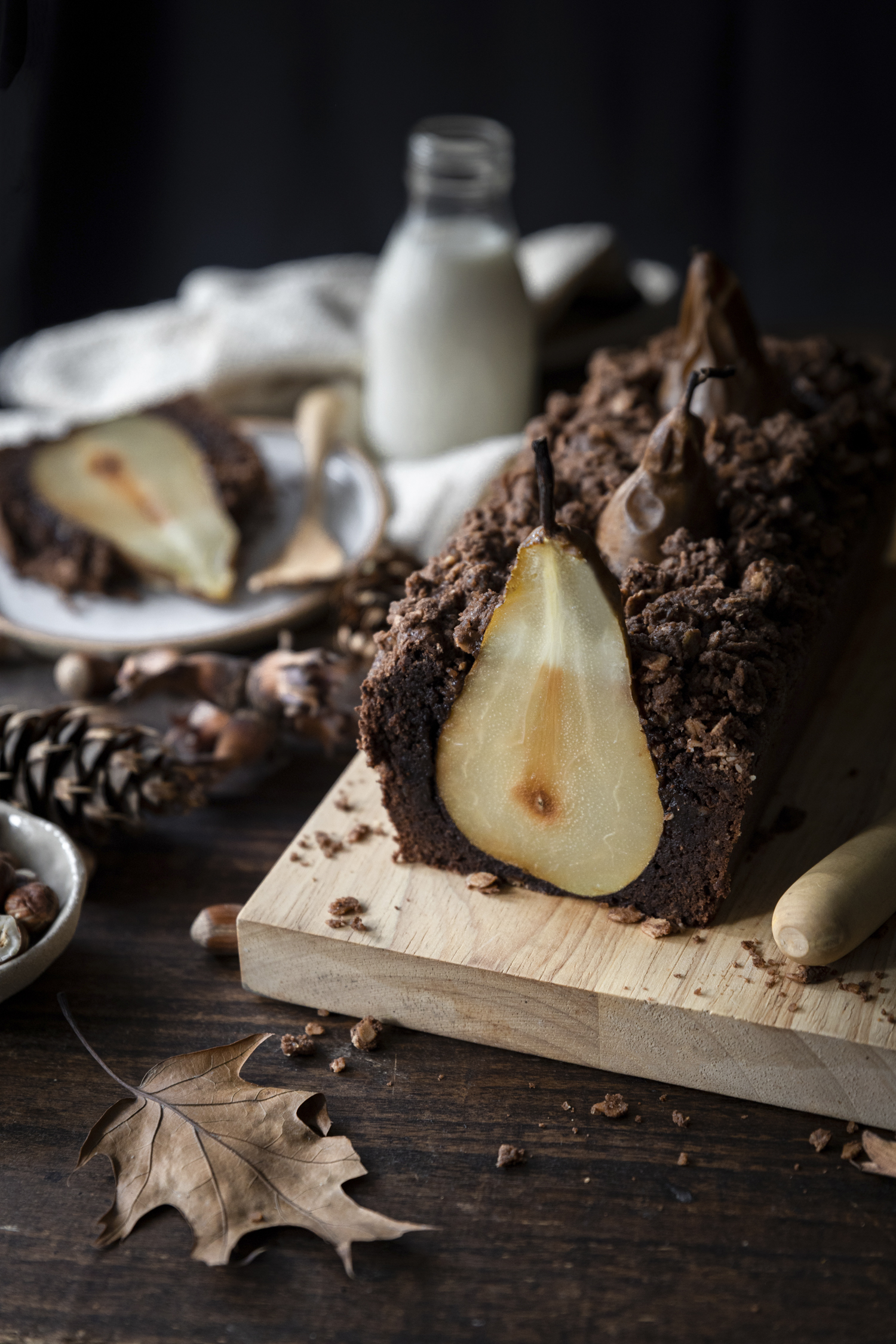
Q. Do you use a particular camera for food photography and why?
I used the Canon EOS 6D for about three or four years of my content creation journey. I’m always travelling around or on shoots for clients, and the 6D was an easy, professional camera to carry around. I also loved the built in Wi-Fi capabilities, it was super useful for sharing work with clients straight to their smartphone or work laptop.
Nowadays, I use the Canon EOS R. About a year ago I wanted to try something new and shake up my content – and I haven’t looked back! It’s also helped up my video content game. Videos are becoming more and more important for engagement on various platforms, and I needed to have the right camera for the job as my clients are looking to me to produce more video content for them.
Q. What competitive advantage do cameras give vs smartphones in helping to capture your unique style of content?
To me, using a professional camera has really allowed me to elevate my business. And clients notice the equipment I bring to shoots. The details, the recording capabilities, lighting options, it’s just much more versatile with a professional camera.
Q. You have quite a dark, atmospheric vibe in your photos – how do you go about creating this? Is there a specific lighting set-up you use? What would be a simple lighting kit/set-up for beginners who want to level up their food photography game?
It’s funny because most people doing what I do tend to live in the countryside, you know – in big country houses and massive, homey kitchens – I’m doing all of this in my apartment in the middle of a big city.
However, I’ve done my best to create a signature atmospheric style with what I have to hand. One of the most important things to think about when taking up food photography is to have a nice, big surface to frame your food and props.
For this, I simply use a piece of wood that I found on the street. So you don’t need to spend a lot of money to achieve this look. And then for the lighting, I use natural lighting. Sometimes I’ll use some dark materials and fabrics to help create this moody vibe as well, but normally my shoots are done pretty cost-effectively.
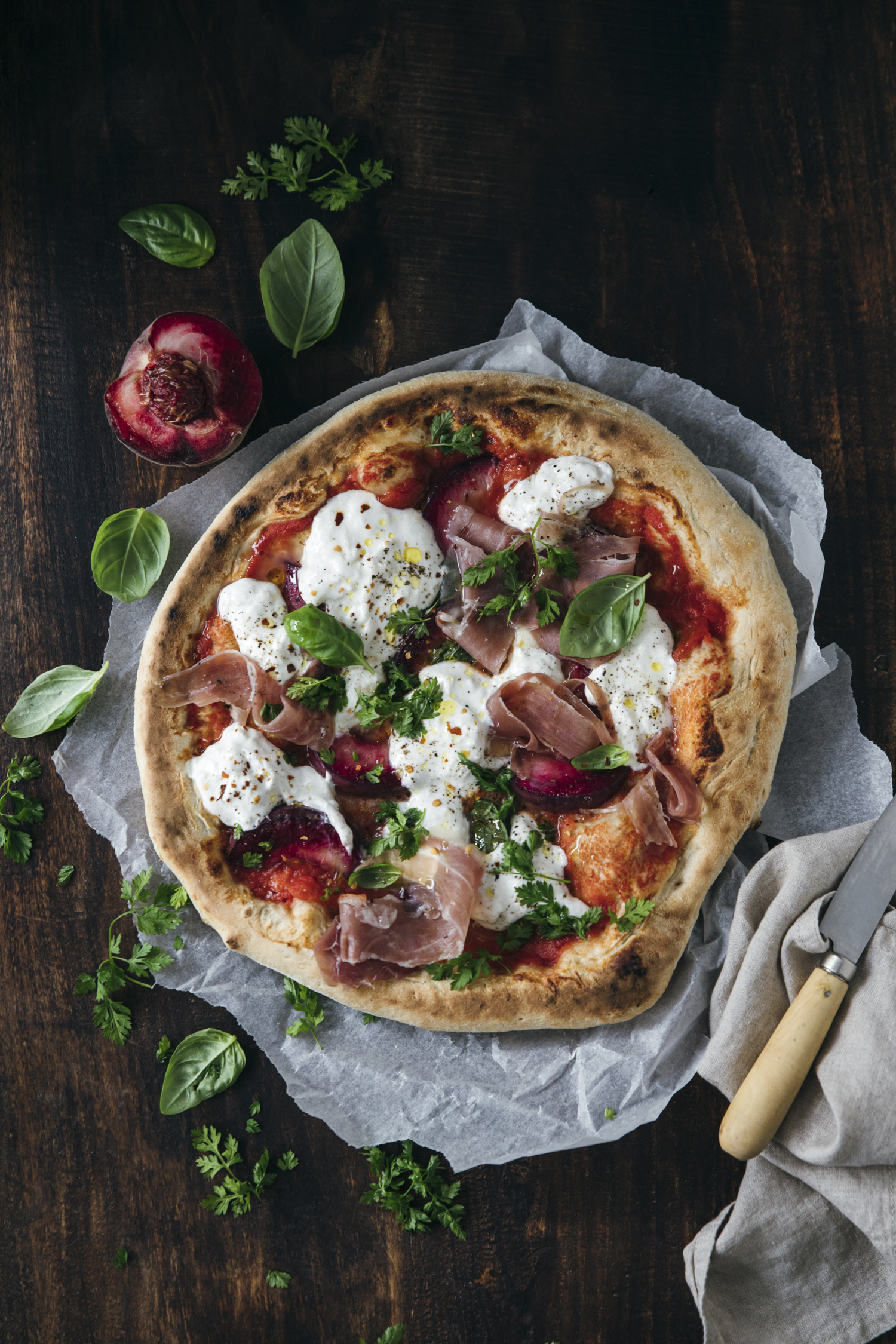
Q. What is your process when you set up a shoot? What settings and kit would you advise using when photographing food?
It depends if it’s for clients or for my own platforms. With clients, they usually have their own needs and demands, so I have to work around that. For myself though, it’s a much more natural, instinctive process.
It’s just like, I could be walking down the street to the market and I see beautiful produce, e.g. strawberries and think about what I can make with these. Once I have decided on the recipe, I start arranging things on my board. It’s designed to feel random and natural, so I play around with putting dishes in the centre or corner and then constructing the food and ingredients all around those, as well as glasses, other props, etc.
A post shared by Emilie Franzo (@plus_une_miette)
A photo posted by on
Q. How do you come up with new ideas for your feed? How do your techniques and style differ across your Instagram posts?
It’s definitely the food that influences and inspires my content – it’s better this way for me. I have my own personal brand and know how I like to construct a story. However, there are also colours that I love to use such as green, orange and brown and these colours are pretty consistent in my pictures. This is my way of developing that personal brand that’s unique to me and that helps me get recognised across social media.
Q. What are some of your favourite creative techniques for foodie shoots (e.g. the photo of a photo shot, photographing through a glass)? Do your dishes influence the content you create? Or are they just your subjects?
I love playing with the depth-of-field in my images. I’ll often use flowers or fresh herbs as it’s nice for the aesthetic of my content. Also, it’s great for beginners because it shows you don’t need to invest much to develop your own techniques and style. You can typically find flowers or other plants around where you live or buy them quite cheaply from your local florist or even a grocery store. As you can tell, I like to use whatever is around me.
A post shared by Emilie Franzo (@plus_une_miette)
A photo posted by on
Q. How do you work creatively with props (e.g. cutlery, ingredients, flowers, candles)? What are the essential props any aspiring food photographer should have at home?
Ceramics – it’s a bit of a trend. I’m noticing a lot more shops are opening up at the moment where you can find some great, rustic style ceramic dishes. But if you want to create that vintage, rustic style you don’t necessarily have to spend a lot of money. You can usually pick them up from relatives, like your grandparents or parents. Same with vintage cutlery – it doesn’t need to be a big investment.
I also like to play with different materials for my shots, like dish towels or napkins. They’re easy to find and you play around with different colour and texture combinations to define your own personal style.
Q. What is your process when doing a tapas style set up?
I love to create big tapas boards. It's something I usually do when friends are coming over. Instead of having a classic dinner with starter, main and dessert, I prepare several little snacks that I put all together on a big board so that everyone can get involved. It's very colourful and tasty.
When I want to take a shot of this kind of board, I usually place different colours, textures and styles of tapas close to each other so that they stand out more. I also put some in bowls or on little plates to create different levels and to structure the picture. For this kind of dish, it's better to take a top shot picture to see all the different elements.
A post shared by Emilie Franzo (@plus_une_miette)
A photo posted by on
Q. How do you tackle shooting in a dimly lit restaurant or environment?
Now that’s a big question! I get this quite a lot from my followers such as, “How do I take pictures in a restaurant? The lights are always so dim and yellow”. There are some simple steps you can take to try and remedy the scenario at times. For the light, always try to nab a seat by the window so you can get some natural light onto your food.
If that’s not possible, a little trick I picked up when shooting in dark restaurants is to create a makeshift reflector using a white napkin. Just stand them up next to your plate and you’re good to go. If you’re not too shy, you could also take your plate and go outside.
I would also leverage candles they often light if you’re going at nighttime. You may not get a lot of light, but you can replicate that dark, moody atmosphere, using the shadows to create some really interesting shots.
Q. How do you select your photos for Instagram? For example, how do you decide between what goes onto your website, your socials or your portfolio?
I usually decide in the editing/touch-up process. I use a mobile editing app which kind of lets me get a sense of how the images will look on my Instagram feed. It’s never really premeditated – during the shoot I’ll just take pictures as I go along. If I don’t have a picture for every step, that’s ok – I don’t hold myself to a set plan or structure. Otherwise, I feel I would be flooding my feed with too many photos.
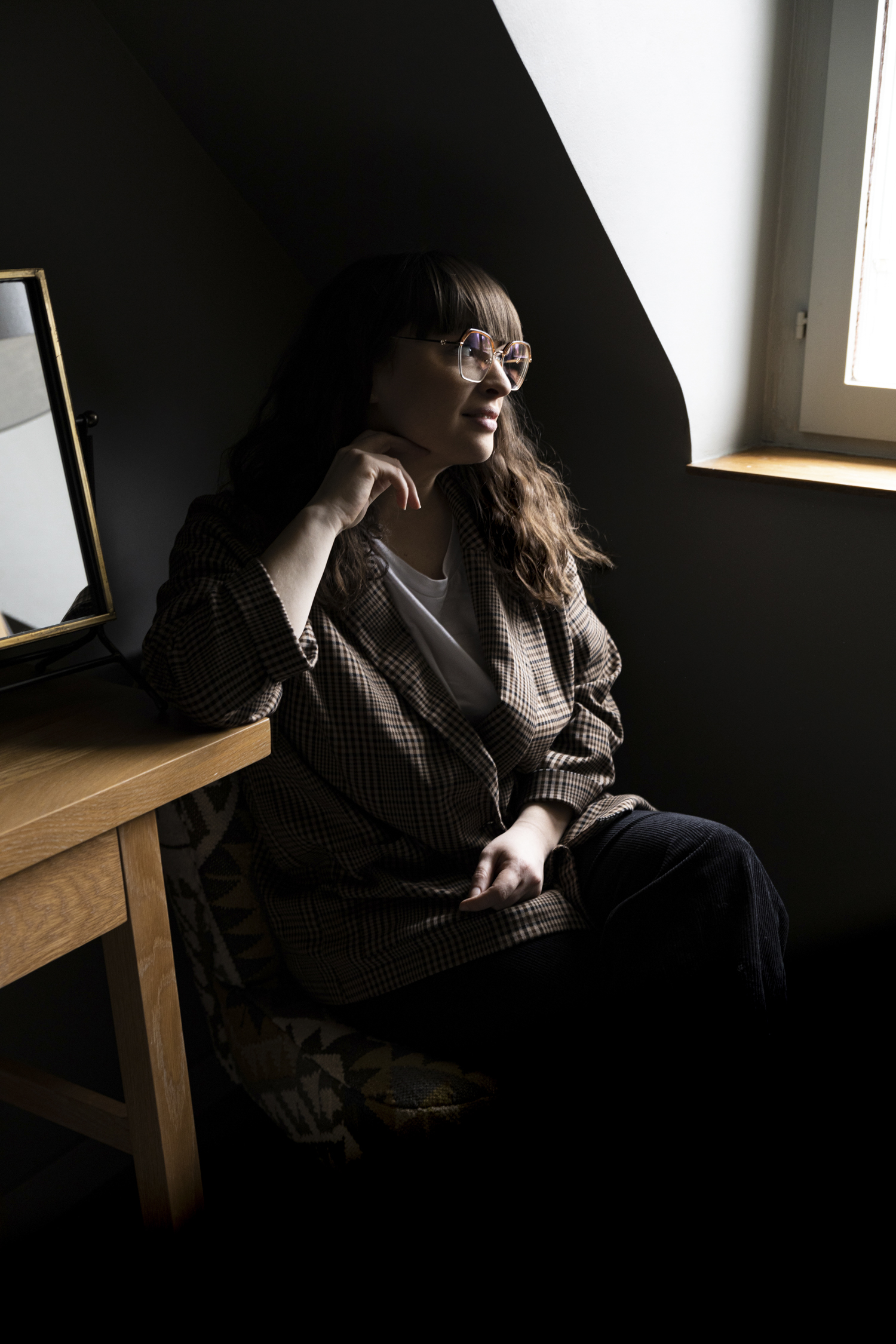
Q. How do you leverage Instagram’s tools to make creative content on Instagram Stories (e.g. with boomerangs)? Anything hacks you can share with budding creators?
I actually don’t use many of Instagram’s tools. Instead, I use a mobile app which gives me a bit more creative flexibility with tools and filters. It helps me create the narrative of the work before downloading and posting straight to Instagram. It’s much easier for adding in links, hashtags, etc. As well as just organising the content. It’s also great for Instagram Stories as well, as I can plan them in advance rather than having time gaps between Stories.
Q. Are there any food photography trends that you think will become popular in the future? Or are on the way out?
It’s hard to say at the moment. The moody, dark vibe came about around five years ago – but it’s still popular. It’s more about the way you adopt the trend and twist it to fit your own brand. You can also see it in the reverse, where a lot of food photographers are making really bright pictures, with pops of colour throughout, and that’s also working very well.
There’s also a trend around close-ups, immersive images of food that lots of creators are using to show more textures, creating a sense that you’re actually at the table, about to dig into the dish. I guess a lot of creators are enjoying this style because it makes you want to replicate what you’re seeing, really dig into the nitty-gritty of the recipe.
A post shared by Emilie Franzo (@plus_une_miette)
A photo posted by on
Q. What advice would you give to up-and-coming food content creators looking to showcase their work to a wider audience?
Be true to yourself. If you’re replicating what you’re seeing other creators do on Instagram, you’re not going to stand out from the crowd. That’s the big issue with trends, you see something is working for someone else and you expect it to work for you also. Just be happy with the work you’re putting out there, that’s the most important thing you can do for yourself. If you want to grow and have your work shared by more people, focus on creating new, exciting things that are inspired by trends, but not totally dependent on them. Create your own universe!
Q. What would be your ultimate kit bag?
I would definitely include the EOS R or the 6D, both are exceptional cameras and the built-in Wi-Fi capabilities are a must have for beginners. In terms of lenses, I would suggest the Canon RF and EF 24-70mm. It’s a nice wide lens which allows for decent close-ups as well. It might be more expensive, but it’s worth it, you can do almost anything with it, especially in smaller spaces (like a city apartment). I used to work with 50mm in the past, but you have to really stretch to get that good table shot.
Read more:
Create appetizing food photography with a basic setup
Best books on food photography
10 tasty food photography tips

Lauren is a writer, reviewer, and photographer with ten years of experience in the camera industry. She's the former Managing Editor of Digital Camera World, and previously served as Editor of Digital Photographer magazine, Technique editor for PhotoPlus: The Canon Magazine, and Deputy Editor of our sister publication, Digital Camera Magazine. An experienced journalist and freelance photographer, Lauren also has bylines at Tech Radar, Space.com, Canon Europe, PCGamesN, T3, Stuff, and British Airways' in-flight magazine. When she's not testing gear for DCW, she's probably in the kitchen testing yet another new curry recipe or walking in the Cotswolds with her Flat-coated Retriever.
